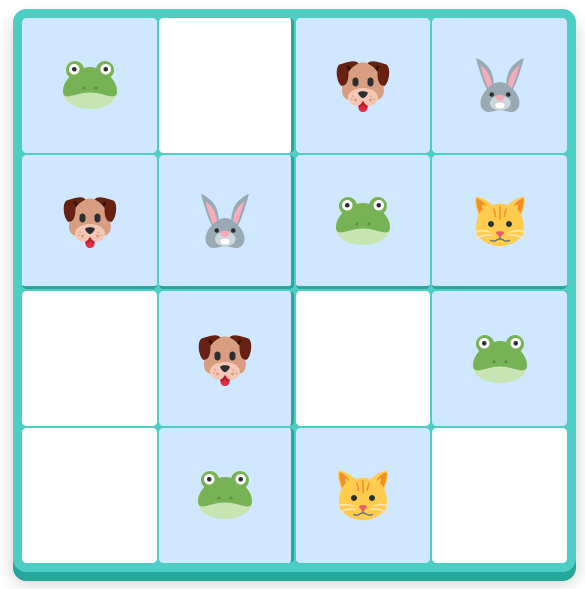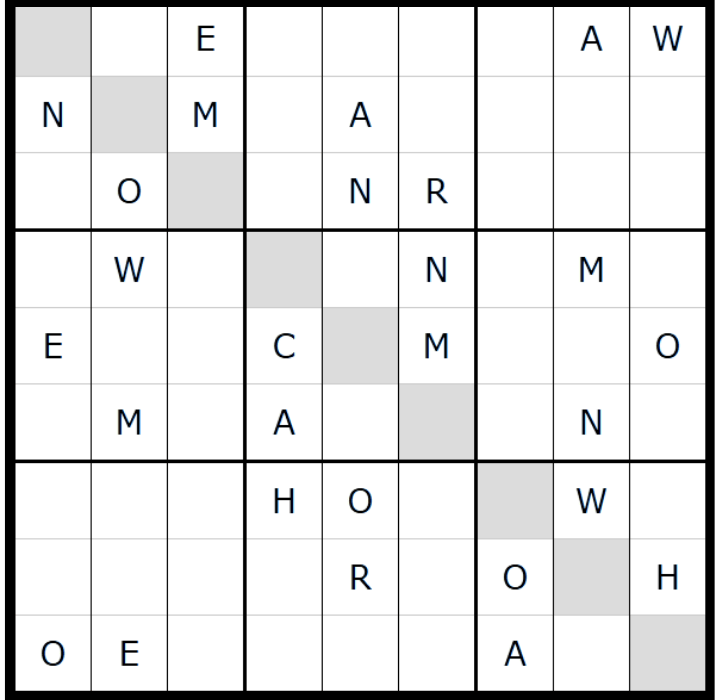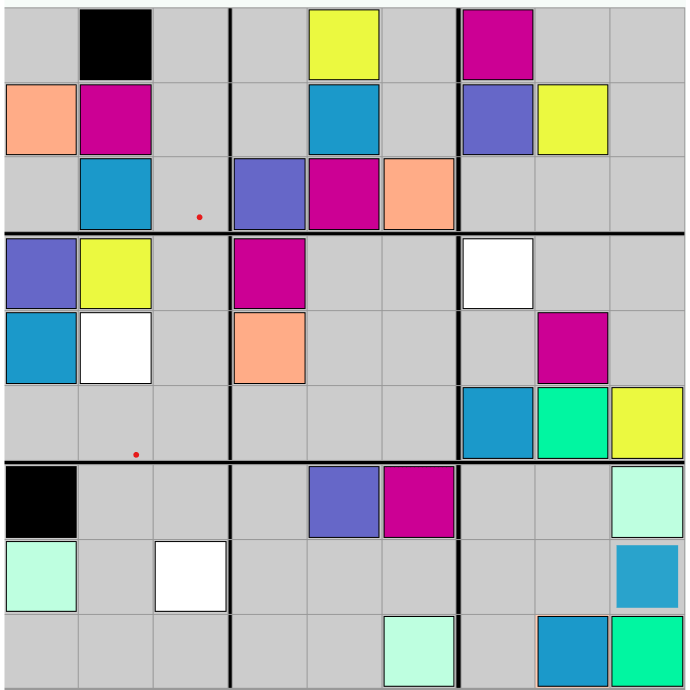We all know and love the classic Sudoku. That simple 9×9 grid of numbers has been a reliable companion for morning commutes, lazy Sunday afternoons, and anyone looking for a quick mental tune-up. But as we head further into 2025, the world of logic puzzles is evolving. The new wave? Themed Sudoku variations.
If you’ve felt the classic puzzle has become a bit too familiar, or if you’re trying to get your kids interested in a “brain game” that isn’t a high-speed video game, these variations are the answer. They swap out the familiar numbers for colors, emojis, and even trivia, transforming a solo logic exercise into a vibrant, engaging, and highly shareable experience.
Here’s why these themed puzzles are taking over and why you should try one today.
What Exactly is a Themed Sudoku?
At its core, a themed Sudoku uses the exact same logic as the original. The goal is still to fill a grid (usually 9×9, or simpler 4×4 and 6×6 grids for beginners) so that no symbol is repeated in any row, column, or 3×3 box.
The only thing that changes is the set of symbols. Instead of the digits “1” through “9,” you might use:
- Nine different colors
- Nine different emojis (e.g., 🍎, 🚗, ✈️, 🐶, 🐱, ☀️, 🌙, ❤️, ⭐)
- Nine different letters (which may or may not spell a word)
This simple swap is a game-changer, opening up the world of logic puzzles to a whole new audience.
1. Emoji Sudoku: Express Yourself with Logic

This is perhaps the most popular and fastest-growing trend, especially in the digital age.
How it works: Instead of numbers, you use a set of nine distinct emojis. Why it’s trending:
- Kid-Friendly: For children, numbers can be abstract and intimidating. Emojis are fun, familiar, and concrete. A child who balks at a “math puzzle” will eagerly jump at the chance to figure out where the 🐶 or 🍕 goes.
- A Universal Language: Emojis transcend language barriers, making these puzzles universally accessible and shareable.
- Visually Engaging: In a world dominated by visual content, Emoji Sudoku is simply more appealing to our screen-trained brains. It feels less like a stark test and more like a playful challenge.
This variation is a powerful educational tool, teaching young minds core concepts of logic, pattern recognition, and critical thinking, all disguised as a fun game.
2. Wordoku (or Letter Sudoku): A Workout for Your Lexicon

For the logophile (word lover) who also appreciates logic, Wordoku is a perfect match.
How it works: The grid uses nine different letters instead of numbers. In many versions, the nine letters in the solution will spell out a “mystery word” or “key word,” adding an extra layer of discovery. Why it’s a hit:
- Dual Brain Training: It simultaneously engages the logic-oriented left brain and the language-processing centers.
- Beyond Numbers: It’s the perfect entry point for people who feel “I’m not a math person.” By removing the numbers, it removes the mental block and reveals the puzzle for what it is: pure logic.
- Trivia Sudoku: A popular sub-genre, Trivia Sudoku gives you clues to solve. For example, a trivia question like “What is the capital of France?” (Paris) might give you the letters P-A-R-I-S to place in the grid, combining general knowledge with logical deduction.
3. Color Sudoku: A New Layer of Challenge

This variation is a bit different and is a fantastic step up for seasoned Sudoku players.
Color Sudoku is a variant of classic Sudoku that replaces the numbers 1–9 with 9 distinct colors. The core logic remains identical to traditional Sudoku:
Rules:
- 9×9 Grid: Divided into 3×3 subgrids (boxes).
- No Repeats: Each row, column, and 3×3 box must contain all 9 colors exactly once.
- Pre-filled Clues: Some cells start with colors; use logic to fill the rest.
The challenge is purely pattern recognition and elimination—no math, just ensuring no color repeats in any row, column, or box.
This adds a fascinating new dimension to the solving process, forcing your brain to cross-reference rows, columns, boxes, and colors.
Comparison: Which Sudoku Variation is Right for You?
| Puzzle Type | Core Symbol | Key Challenge | Best For |
|---|---|---|---|
| Classic Sudoku | Numbers (1-9) | Pure logical deduction. | Traditionalists, math lovers, focused logical practice. |
| Emoji Sudoku | Emojis | Swapping abstract numbers for concrete, fun images. | Kids, visual learners, and a fun, modern break. |
| Wordoku | Letters | Using logic while engaging language centers. | Writers, word-game lovers, and students. |
| Color Sudoku | Numbers + Colors | Adding a complex, overlapping 4th constraint. | Sudoku veterans, and experts seeking a new challenge. |
Why Your Brain Loves These Variations (The Mindfulness Trend)
Themed Sudoku isn’t just a gimmick; it’s a powerful tool for cognitive health and, crucially, mindfulness.
We spend our days multitasking, context-switching, and doom-scrolling. A puzzle like a themed Sudoku forces you to do the opposite: single-task.
- It Induces a “Flow State”: When you’re absorbed in the puzzle, matching colors or finding the right spot for the 🐱, your mind enters a “flow state.” Your sense of time fades, and external stresses melt away.
- It’s a Mental “Reset Button”: Unlike a passive activity like watching TV, solving a puzzle is an active form of relaxation. It engages your mind just enough to quiet the “background noise” of anxiety and daily worries, acting as a mental reset.
- It Boosts Cognitive Agility: By switching symbols from numbers to emojis or letters, you’re forcing your brain to adapt. This “cross-training” builds new neural pathways and improves mental flexibility, attention to detail, and problem-solving skills.
Why You’re Seeing These Puzzles Everywhere?
If you’ve noticed these colorful, emoji-filled grids popping up in your social feeds or your Google Discover feed, you’re not alone. There’s a reason these variations are performing so well.
Google’s algorithm is designed to find content that is helpful, reliable, and “people-first.” Themed puzzles are a perfect match:
- They are Highly Visual: A colorful grid or a puzzle full of emojis is eye-catching and compelling. It makes you stop scrolling.
- They are Shareable: They make for great social media content. Posting a blank puzzle is a challenge to your friends, and posting a solved one is a small, shareable victory.
- They Tap Into User Interests: They hit the sweet spot between several major 2025 trends: brain training, mindfulness, and kid-friendly educational activities.
The Final Word
The classic 9×9 grid will always be a staple. But themed Sudoku variations are the future of casual brain training. They are more inclusive, more engaging, and perfectly suited to our modern, visual world.
Whether you’re a Wordoku wizard, an Emoji Sudoku enthusiast, or a Color Sudoku expert, you’re doing more than just passing the time. You’re engaging in a powerful act of mindfulness, sharpening your logic, and keeping your brain agile—one colorful square at a time.
What’s your favorite variation? Try one of these themed puzzles today and feel the difference!
FAQs On Themed Sudoku
Q1. What is Themed Sudoku?
Ans- Themed Sudoku is a creative variation of the classic Sudoku puzzle where numbers are replaced with symbols such as colors, emojis, or letters. The logic remains the same—each row, column, and box must contain all unique symbols without repetition.
Q2. How is Themed Sudoku different from Classic Sudoku?
Ans- Themed Sudoku uses different symbols instead of numbers, such as emojis, letters, or colors. While the solving logic is identical to classic Sudoku, themed versions are more visual, engaging, and accessible to a wider audience, including kids.
Q3. What are the most popular types of Themed Sudoku?
Ans- The most popular types of Themed Sudoku include Emoji Sudoku, Wordoku (Letter Sudoku), and Color Sudoku. Each offers a unique twist—emojis for fun visuals, letters for word lovers, and colors for advanced logical challenges.
Q4. What is Emoji Sudoku?
Ans- Emoji Sudoku replaces numbers with emojis like 🍎, 🚗, 🐶, or ⭐. It’s a fun, kid-friendly version that makes logic puzzles more visual and accessible, helping children develop reasoning and pattern recognition skills.
Q5. What is Wordoku and how do you play it?
Ans- Wordoku is a Sudoku variation that uses letters instead of numbers. The nine letters often spell out a hidden word or theme. Players solve it using standard Sudoku logic, ensuring each letter appears once per row, column, and box.
Q6. What is Color Sudoku?
Ans- Color Sudoku adds a colorful twist by overlaying the grid with color-coded regions. In addition to the standard Sudoku rules, each color region must also contain all numbers from 1 to 9, creating an extra layer of logical complexity.
Q7. Why are Themed Sudoku puzzles becoming so popular?
Ans- Themed Sudoku puzzles are trending because they’re visually engaging, easy to share on social media, and align with modern interests like mindfulness and brain training. They make logical puzzles more inclusive and fun for all ages.
Q8. Are Themed Sudoku puzzles good for kids?
Ans- Yes, Themed Sudoku puzzles are excellent for kids. Variations like Emoji Sudoku make learning logic fun, improve concentration, boost problem-solving skills, and reduce anxiety by transforming math-like puzzles into playful challenges.
Q9. How does playing Themed Sudoku benefit the brain?
Ans- Playing Themed Sudoku enhances cognitive flexibility, attention to detail, and memory. It also promotes mindfulness by helping players focus on one task at a time, reducing stress, and improving overall mental agility.
Q10. Where can I find Themed Sudoku puzzles to play?
Ans- You can find Themed Sudoku puzzles online on puzzle websites, educational platforms, and mobile apps. Many creators also share printable versions and daily challenges featuring emojis, colors, or themed letters.
SwetaMS is the founder and editor of Sudoku Times, a leading blog dedicated to Sudoku puzzles, logical reasoning, and brain training. With a deep passion for analytical thinking and problem-solving, Sweta curates engaging Sudoku challenges, expert solving techniques, and thoughtful insights for puzzle enthusiasts of all levels.